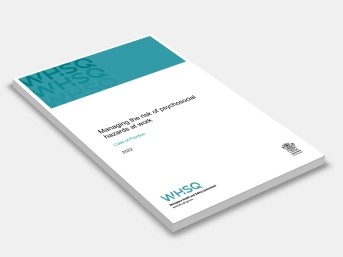Managing the risk of psychosocial hazards at work
Workplace Health and Safety Queensland
This code of practice on managing the risk of psychosocial hazards at work is an approved code of practice under section 274 of the Work Health and Safety Act 2011 (WHS Act). An approved code of practice is a practical guide to achieving the standards of health, safety and welfare required under the WHS Act and the Work Health and Safety Regulation 2011 (WHS Regulation).
Under section 26A of the WHS Act, a person conducting a business or undertaking (PCBU) must:
• comply with an approved code of practice; or
• manage hazards and risks arising from the work carried out as part of the business or undertaking in a way that is different to the code but provides an equivalent or higher standard of work health and safety than the standard required in the code.
A code of practice applies to anyone who has a duty of care in the circumstances described in the code. In most cases, following an approved code of practice would achieve compliance with the health and safety duties in the WHS Act in relation to the subject matter of the code. Like regulations, codes of practice deal with particular issues and do not cover all hazards or risks that may arise. The health and safety duties require duty holders to consider all risks associated with work, not only those for which regulations and codes of practice exist.
Codes of practice are admissible in court proceedings under the WHS Act and WHS Regulation. Courts may regard a code of practice as evidence of what is known about a hazard, risk or control and may rely on the code in determining what is reasonably practicable in the circumstances to which the code relates.
An inspector may refer to an approved code of practice when issuing an improvement or prohibition notice. This may include issuing an improvement notice for failure to comply with a code of practice where equivalent or higher standards of work health and safety have not been demonstrated.
Contents:
1: Introduction
2: Consultation, Cooperation, Coordination
3: How To Manage Psychosocial Risks And Hazards
4: Responding To Complaints, Incidents Or Reports Of Psychosocial Hazards
5: Issue And Dispute Resolution
Appendix 1: Other Legislation
Appendix 2: Case Studies
Appendix 3: Examples Of Psychosocial Hazards
Appendix 4: Examples Of Control Measures For Psychosocial Hazards
Appendix 5: Example Of A Work-Related Bullying Policy
Appendix 6: Example Of A Risk Register
